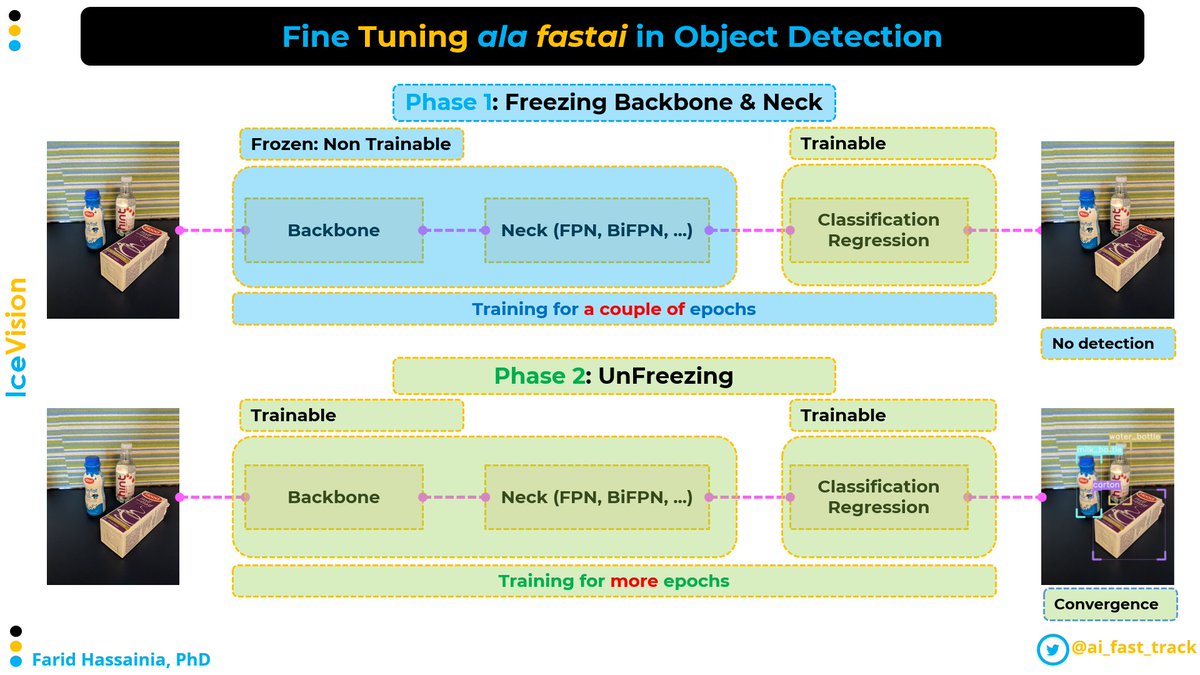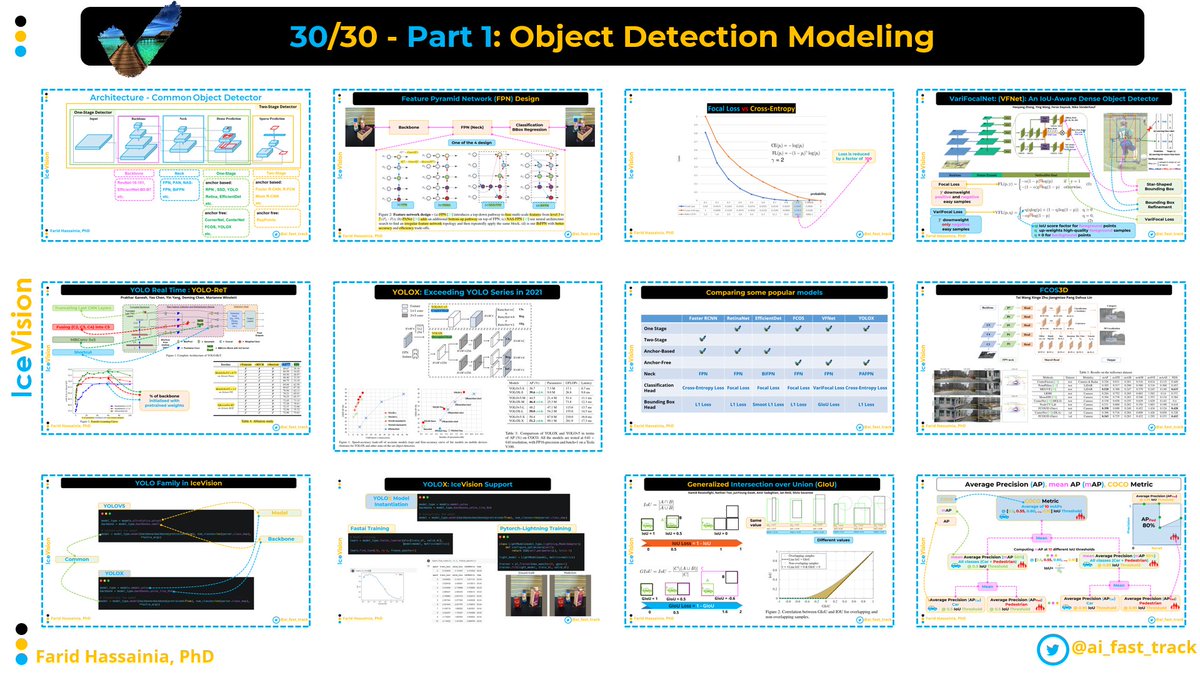
Detecting small object detection is one of the most challenging tasks in object detection.
❓ Want to know an effective way to overcome that❓
Check out the SAHI integration in IceVision🧊
👇
❓ Want to know an effective way to overcome that❓
Check out the SAHI integration in IceVision🧊
👇
All IceVision models transparently support SAHI (MMDetection, EfficientDet, Torchvision, and YOLOv5). The results are quite impressive!
SAHI is a very cool library that drastically improves detection of small objects.
SAHI is a very cool library that drastically improves detection of small objects.
📌 It is simply used at inference time
📌 It leverages high resolution images.
📌 Your training process remains the same as usual.
🔎 At the high level, this is how SAHI works:
1- It takes a high resolution (e.g.1920 x 1024 px), and divide it in patches (e.g. 128 x 128 px)
📌 It leverages high resolution images.
📌 Your training process remains the same as usual.
🔎 At the high level, this is how SAHI works:
1- It takes a high resolution (e.g.1920 x 1024 px), and divide it in patches (e.g. 128 x 128 px)
2- It performs an inference on that patch
3- It slides the window, and repeat step 2. You can choose the amount (percentage) of the overlapping part
4- It combines the boxes from all the patches
5- Project those boxes on the original image
3- It slides the window, and repeat step 2. You can choose the amount (percentage) of the overlapping part
4- It combines the boxes from all the patches
5- Project those boxes on the original image
Integrating SAHI in IceVision was led by our amazing core-developer @Fra_Pochetti 🙏
Francesco added a new notebook showing the step-by-step process to help you using SAHI in your project!
🎁 NB: github.com/airctic/icevis…
Francesco added a new notebook showing the step-by-step process to help you using SAHI in your project!
🎁 NB: github.com/airctic/icevis…
He also posted a great article here:
🎁 francescopochetti.com/icevision-sahi…
Kudos to the SAHI creator team for their amazing job! 🙏
@fcakyon
SAHI Repo: github.com/obss/sahi
🎁 francescopochetti.com/icevision-sahi…
Kudos to the SAHI creator team for their amazing job! 🙏
@fcakyon
SAHI Repo: github.com/obss/sahi
⭐️ If you are interested in mastering object detection, and standing out from the crowd, feel free to follow me
@ai_fast_track
⭐️ If you could give this thread a quick retweet, it would help others discover this content 🙏
@ai_fast_track
⭐️ If you could give this thread a quick retweet, it would help others discover this content 🙏
https://twitter.com/ai_fast_track/status/1466440518787813381
• • •
Missing some Tweet in this thread? You can try to
force a refresh










